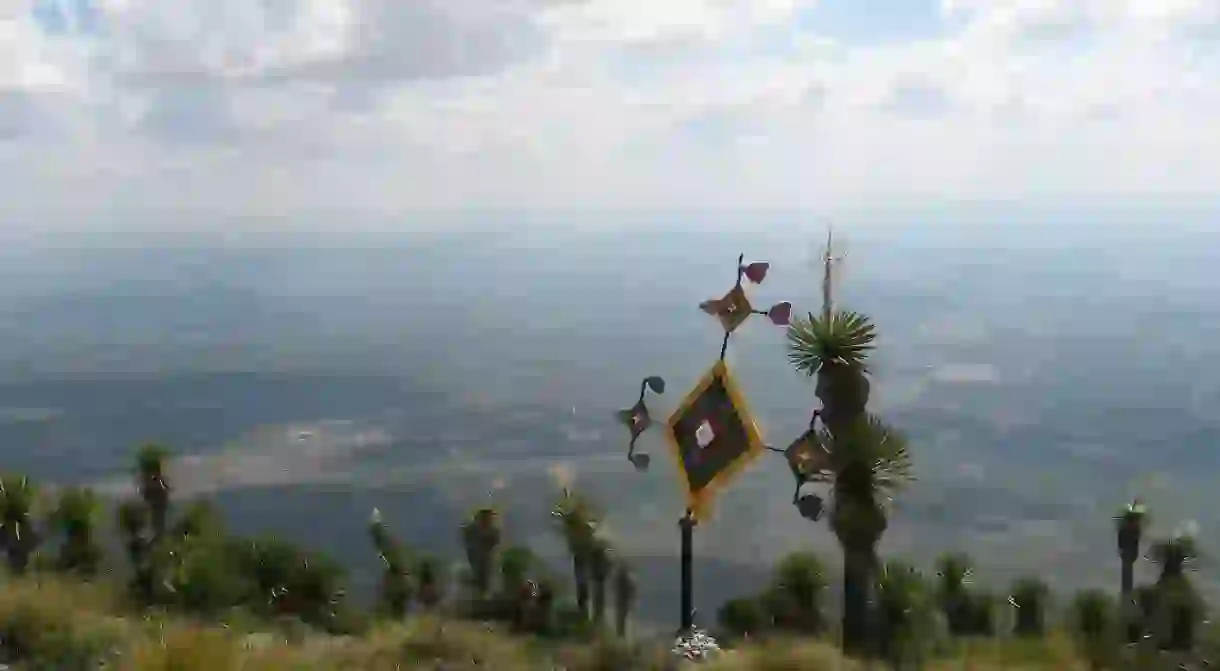Peyote, Mexico’s Favourite Hallucinogen

Peyote, the perfect hallucinogenic day trip for curious travellers and a key element in many indigenous ceremonies, has long been a source of fascination in pop culture. It was said to have ‘inspired’ (or at least been imbibed by) writers like Kerouac and Huxley. It even got a shout-out in the recent Gilmore Girls revival. But what exactly is it? This is everything you need to know about peyote, Mexico’s favourite hallucinogen.
A brief history of Peyote
Peyote, also known as mescaline, mescalito, buttons or even its scientific title, Lophophora williamsii, is actually the name of both the hallucinogen and the extremely slow growing cactus from which it’s sourced. While the bitter taste of this subterranean cactus puts off most animals, for backpackers and natives who are made of tougher stuff, they ingest peyote for both recreational and religious reasons, respectively.
While most people associate the pueblo mágico of Real de Catorce, San Luis Potosí with the taking of peyote, it’s found right across Mexico’s northern desert regions (Chihuahua, Coahuila, Nuevo León and Tamaulipas) and even up into southwestern Texas.

In fact, so popular is peyote at the moment that the peyote cactus is actually considered endangered in Texas. This wasn’t always the case, though, as the late 19th and early 20th century centuries saw peyote use amongst Native Americans prohibited in the US, before later being used as part of US Naval interrogation experiments in the mid-20th century. While they likely realised that peyote ingestion leads to increased suggestibility, they seemingly failed to take into account that it produces a relatively mellow sensation of connection with the natural world and a sense of calm.

Peyote trips
Typically taken as a tea, stewed using the peyote ‘buttons’, this bitter cactus can also be chewed, an act that serves to effectively release the main psychoactive component, mescaline, and induce the famous peyote high for which this humble cactus is known. Introspection is common, while synaesthesia is likely, although nausea is a common side effect before the psychedelic effects hit, and the risk of a bad trip is greater for those with pre-existing or underlying mental health conditions.
Around six peyote buttons are required for the ‘full dose’ of roughly 300mg of mescaline, and the trip can last anywhere up to 12 hours total. As well as being used recreationally, nowadays you can find peyote used across the world in meditation and even psychotherapy sessions, as well as to treat addiction in Native American tribe members.

Use of Peyote in Mexican and native culture
However, long before it was the central component to many an edgy backpacker’s anecdote, peyote actually held far deeper spiritual significance amongst Native Americans, particularly the Huicholes (Wixárika) of Mexico who believe it grants them healing skills and the ability to communicate with their gods. For that reason, it long preceded LSD and psilocybin as a mainstream hallucinogen, with remnants of peyote being found in ruins dating back almost 6000 years. Traditional peyote ceremonies often incorporate ritual migrations into the desert to harvest (but not uproot) the cactus, as well as drumming, chanting and attempts to restore spiritual balance. They are typically carried out at night, and it’s said that permission is asked of the spiritual Wirikuta Desert before any peyote is harvested and offerings are given.

The use of peyote is relatively common in many other pre-Columbian rituals, too, both in Mexico and the US; everyone from the Tonkawa, Mescalero, Lipan Apache, Comanche and Kiowa tribes are said to have used peyote at some point or another. However, peyote is more than just a psychedelic for many indigenous groups – it’s supposedly also effective in aiding with toothache, childbirth and fever amongst other ailments.
This article is intended for informational purposes only and should not be interpreted as comprehensive medical advice. Always take care if planning on ingesting drugs.













